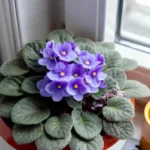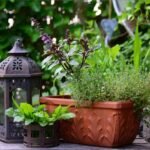Table of Contents
If your yard has no boundary and your neighbour’s pets come in and ruin your lawn, you need privacy in your home, you can’t work, and you don’t want to put up a traditional wall or fence then you can choose trees as an alternative. Which, will not only enhance the beauty of your home but also will create a privacy wall in your home. We’ll pick fast-growing, winter-hardy, and frost-tolerant plants for privacy walls. Privacy trees can grow with little care and direct sunlight. You can create a privacy wall with trees in your house’s back, front, or sides. Also, by landscaping your home with these trees, the home’s natural beauty will increase tenfold. Just ensure your plants don’t grow and get tangled up in power poles or wires that could cause an accident.
These plants can add shade to your neighbor’s space so you can talk to them before they get into trouble with you. You can still grow these plants if you live in a USDA hardiness zone. The speciality of these plants is to provide privacy, shade, temperature control, and environmental balance in your home.
We will name 10 privacy trees in this article. Before telling the details, see the list of these plants:
1. The oak leaf
2. Arborvitae
3. Privet tree
4. Laurel tree
5. Holly tree
6. Pines
7. Leyland cypress
8. Hydrangea
9. Oleander
10. Viburnums
1. The Oak Leaf
The Oak Leaf is the first plant that comes to mind when planning for green surrounds and walls. Their scientific name is Ilex hybrida conaf. You can plant the tree where you want to put a wall, but no electric wire is on it. Like other plants, the leaves are one to three inches by three to six inches.
The trees look somewhat pyramidal. Your initial thought while viewing the trees from a distance could be of green pyramids. The oak leaf is a drought-tolerant and resistant plant.
In spring, their leaves are green, and in fall, they become somewhat brown. Their red fruits are called berries. Their fruits are consumed by birds and bees, while their blossoms draw tiny insects.
Height: 10-15 feet
Light: Direct, bright light is ideal for plant growth.
Light time: 4-8 hours
Zone: 6-9
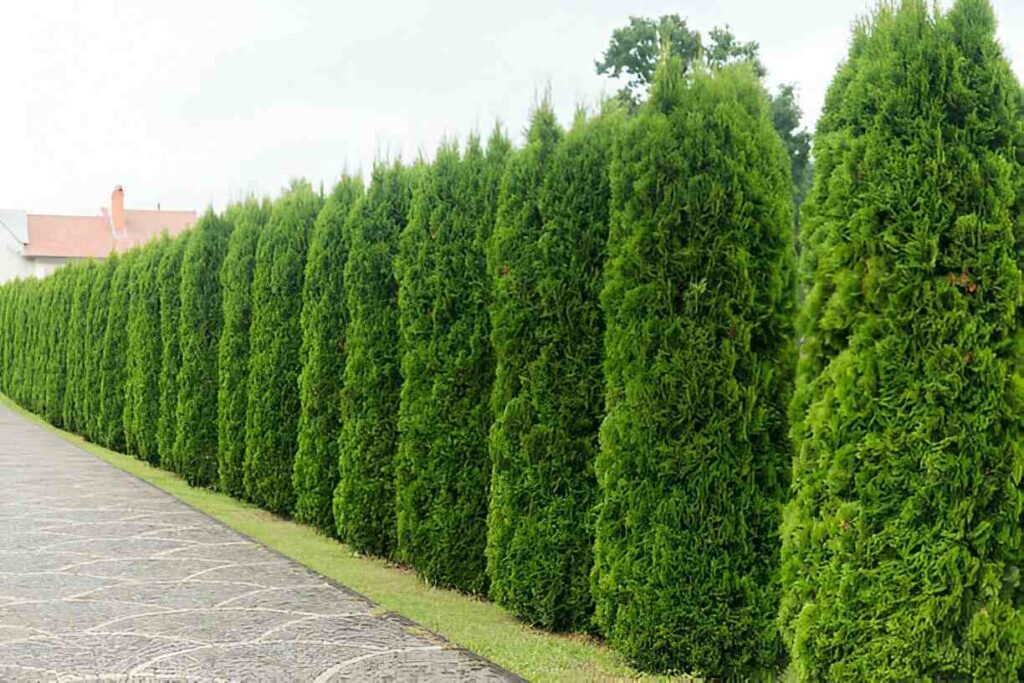
2. Arborvitae Tree
You can choose arborvitae trees for ornamental plants and hedges at home. The plants are native and abundant in North America and East Asia. It is an evergreen tree that you will find with quite tall and stringy tracts and reddish-brown bark. Their hardness can withstand heavy snow and ice.
Growing rate 2.5-3 feet per year. Their wood is used for fences and railway poles. It would help if you were glad your houseplant is resistant to scurvy. If you live in zones 5-7, bring the plant indoors to provide a privacy wall.

3. Privet Tree
You can plant this plant if you want white flowers along with the wall in front of the house. They will appear to you with small bunches of flowers.
The Privet tree is native to East Asia and Africa. Due to its hardiness, it is fast-growing and can survive harsh summer climates. The tree is planted in private areas for its ornamental hedges and foliage. It is about 5-8 feet tall and quite spreading. If your home falls within zones 3-8, you can plant Privet trees. The plant possesses herbal properties.
Leaves of this plant reduce diarrhoea, dysentery, mouth and throat pain, but some species can be mildly toxic to humans. Best of all, you can bring these evergreen plants home because of their low maintenance and privacy.

4. Laurel Trees
Laurel trees are used as hedging plants. Their dense leaves and hardiness allow them to survive in any conditions. Cherry and Portuguese varieties are popular.
It is well-known as a hedge plant in colder regions and does not grow well indoors. This plant will help a lot in creating privacy in your home. They are capable of growing up to 8-20 meters. The tree grows slowly and matures in a few years. You can plant the tree if your home is within zones 7-8. Their leaves are added to pasta sauces in Italy.
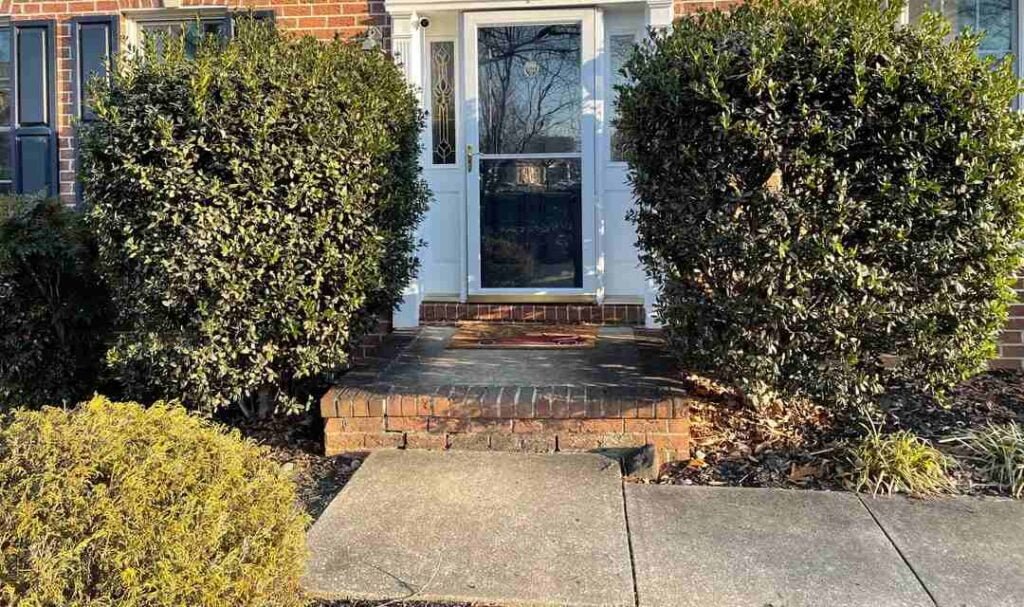
5. Holly Tree
Holly trees grow faster than conifers. They are remarkably adaptable to temperate and subtropical regions. The plant can grow in all seasons for tall privacy fences in homes and backyards. Its scientific name is Ilex aquifolium. The tree’s height is 18-55 meters, and the width is 9-22 meters. Plants can grow in direct sunlight.
This plant will be perfect for you if you live in zones 5-9. Their tiny red fruits, called berries, are a good food source for certain birds and animals. Their leaves have serrated margins. The plant will help repel pests in your home. A tree can be perfect for adding privacy to your home.
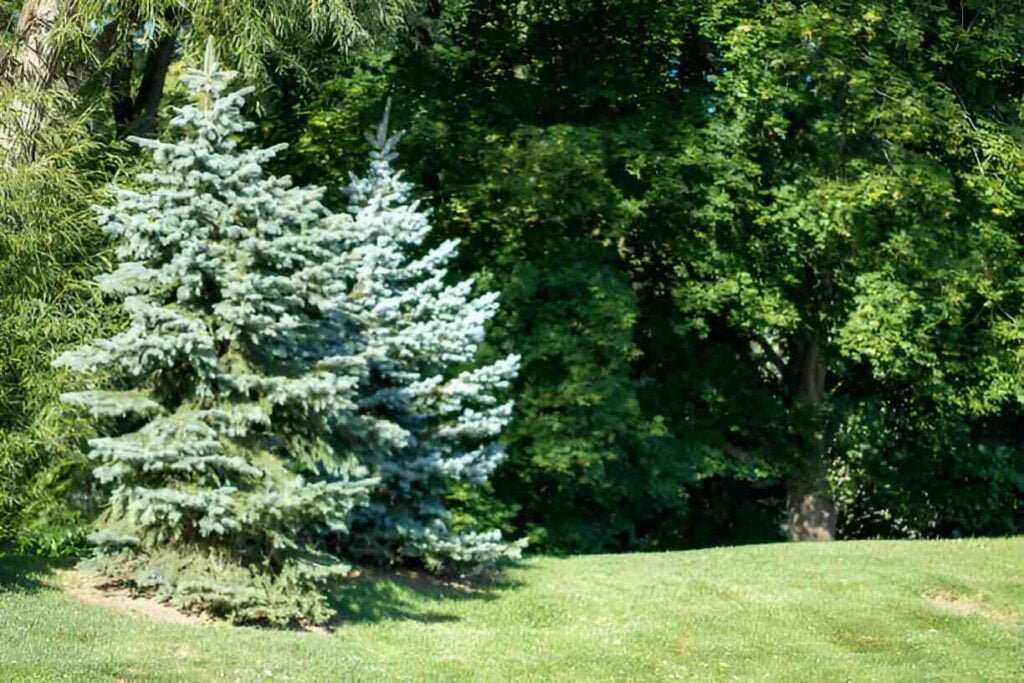
6. Pine Trees
Pine trees are famous for their resin. Their stems are used as fuel, known as the tallest conifer in the northeastern United States. Trees can live up to 200-450 years. You can grow them in harsh conditions.
You can plant smaller trees under the pine trees and plant the pines back. It is the most effective way to protect your privacy. However, as the trees grow too big, there is a risk of being uprooted by heavy storms. White pines grow up to 14 feet wide. You can plant pines if your home is in zones 6-9.
Some harmful insects can attack pine trees. You may occasionally need to apply fertilizers to ward off these pests. You can use trees for landscaping your backyard.
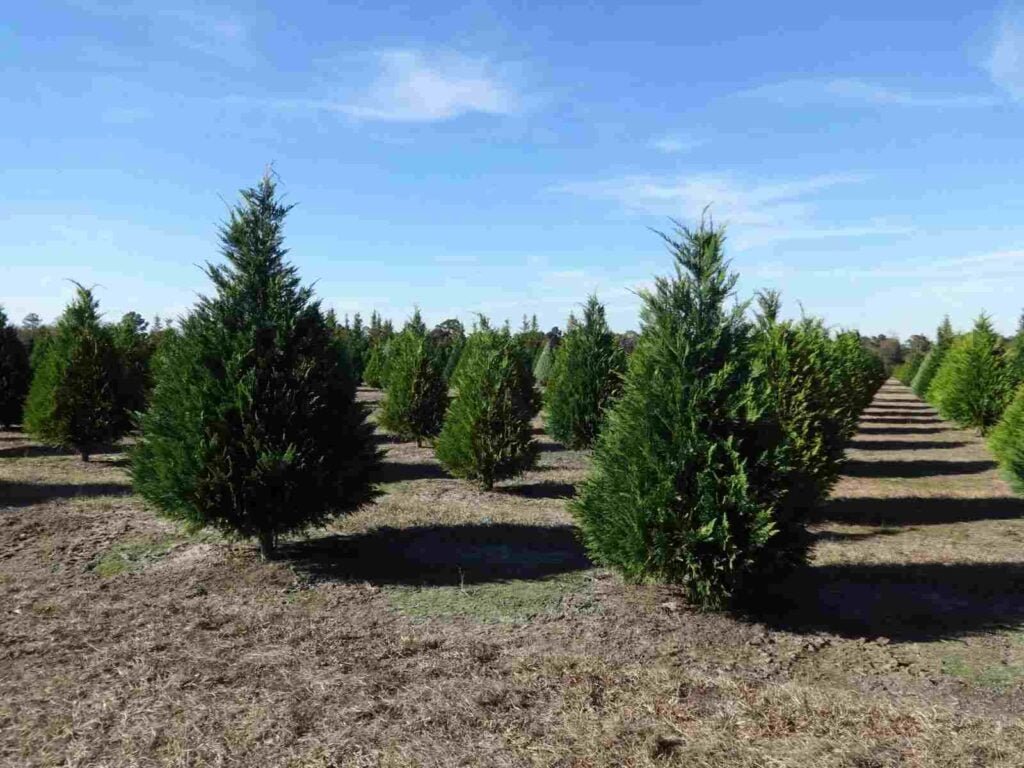
7. Leyland Cypress
It is a fast-growing coniferous evergreen tree used for hedges and screens at home. Plants can grow in direct sunlight. Their scientific name is Cupressus × leylandii. If your home is in zones 4-5, you can easily grow them. The tree is about 20 feet tall. Its leaves make the plant compact, thick, and regular.
The plant can be dark green or pale, depending on the maintenance. Leyland cypress columnar is seen in sap. They grow by at least 1-1.5 minutes every year. In addition to planting at home, you will see them planted in parks.
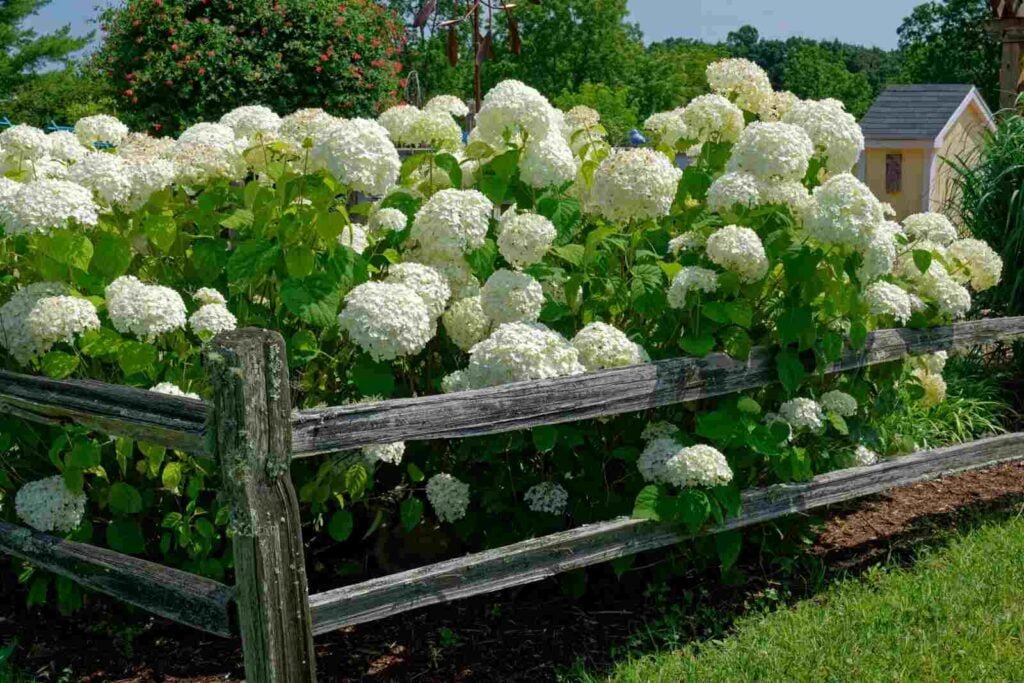
8. Hydrangea
Plant hydrangea in your hedge if you want to see a burst of flowers in summer. That will help create a tall green wall in your yard or garden.
It fills essential parts of the garden and increases the value of privacy and beauty. You can’t plant them together; you must plant them at least 3-5 feet apart. If you plant them side by side, too close together, the number of leaves and flowers will be reduced. It would help if you planted them evenly and spaced accordingly. But remember that they lose their leaves in autumn.
You can plant hydrangea plants for home landscaping. If you live in zones 4-9, hydrangea is perfect.
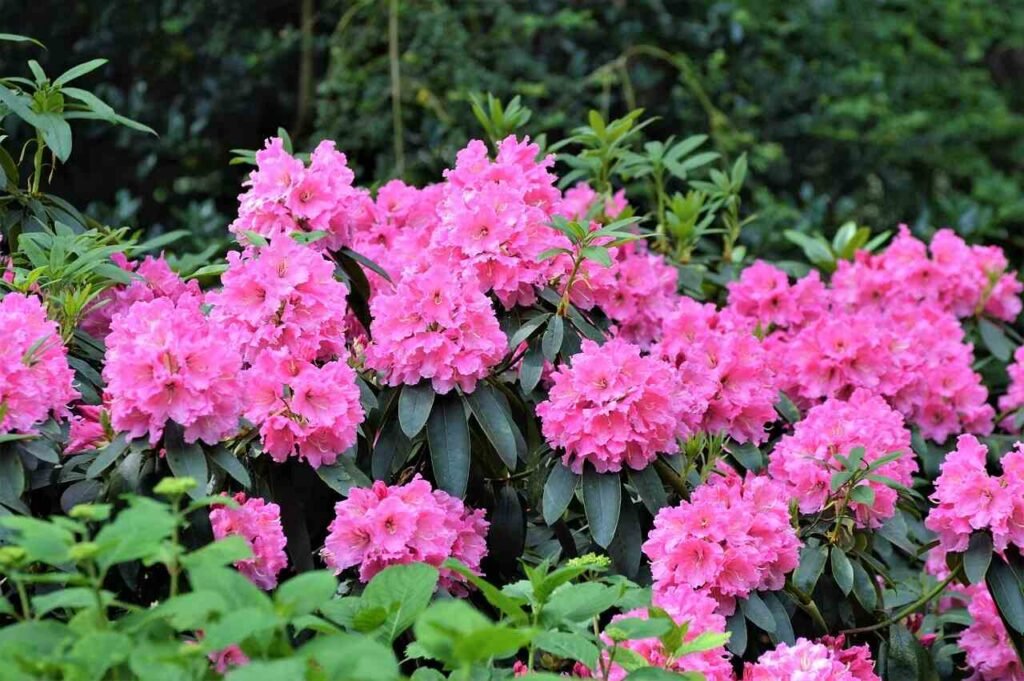
9. Oleander
If you are bothered by your neighbours’ activities or are a little away from them and need privacy to hang out in your work and garden, you can create a hedge with Oleander. What kind of wall you want to build can be a crucial factor. You can choose tall varieties of Oleander or look for dwarf varieties if you establish a tall hedge in rows.
They are fast-growing plants; you should plant them at least 3-4 feet apart, and they will fill in the empty spaces quickly. If you first plant them, water them regularly so they won’t need as much water in subsequent years. They are drought-tolerant and unlike plants that cannot survive adverse weather conditions. Bring them home if your home is in zones 8-10 (USDA). But you should know that their flowers and leaves are toxic to humans and animals.

10. Juniper
Juniper belongs to the Juniperus family. It gives your home a green look and evergreen growth. You can easily fall in love with their small leaves and herbal aroma. You can use juniper trees in-home privacy as well as landscaping. You can grow juniper trees if your area is within 2-7. As they are strong and healthy, they do not require much space. They can be placed anywhere in your home to create a wall. Another great advantage of them is that they don’t need extra water, so you don’t have to water them regularly. You can worry about the juniper tree for shrubbery and privacy in your home.
X
Telegram



